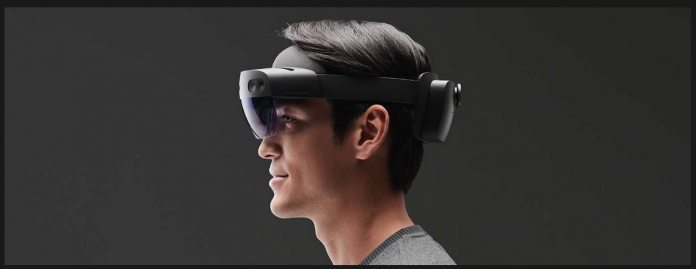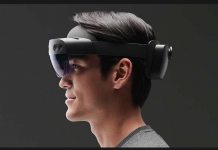Naturally, through the second generation of a device that never reached consumers, Microsoft has attempted to address some of the biggest issues. Among the problems with the original HoloLens was its bulk. HoloLens 2 instantly looks more svelte, maybe not as trimmed down as Magic Leap, but still it seems much more comfortable than the original. In terms of general design, five cameras sit on the front of the device and the lenses/screens are now clear. Alex Kipman, Microsoft’s head of the HoloLens division says the company relied on user feedback to deliver a more comfortable device. The company scanned the heads of thousands of people across ages and genders to create what it describes as a “universal fit”.
Getting the balance right was also important, so refinements were made to ensure users can wear HoloLens 2 for longer. Kipman promises the device is three times more comfortable, without explaining how that measurement can possibly be defined.
FoV
Microsoft has also addressed an issue with immersion and particularly field of view (FoV). FoV became a buzzword around HoloLens as the device was largely poor in giving users a wider view. That changes with HoloLens 2 as the company has increased the amount of holographic detail the can perceive. Indeed, the device produces up to 47 pixels per degree of sight and has more than doubled the field of view over the OG. The result is a headset that produces the same as a 2K screen for each eye, a significant improvement over the HoloLens’ 720p. Interacting with holograms is now more dynamic, with Microsoft saying users can “touch” holograms. HoloLens 2 sports 3.5 hours of battery life and will be available later this quarter for a pricey $3,500.




